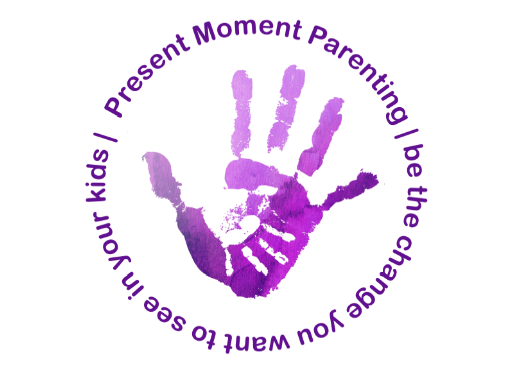
Did you know that in the languages of Sweden, Norway and Finland, where they experience long snow-filled winters, there are as many as 180 snow and ice related words. That’s a lot of ways to talk about something we just call, well, snow and ice. Imagine how differently snow would appear to you if you had so many ways to describe it rather than just cold, wet and white!
Now think about how much richer your child’s emotional life would be if they could describe what they were feeling with more words than just happy, sad and mad.
Now think about how much richer your child’s emotional life would be if they could describe what they were feeling with more words than just happy, sad and mad.
The thing is, the labels that we apply to our emotions do more than just help us to communicate with others what is going on in our internal world. They also help us to understand how to process and cope with what is going on and assist us in directing our behavior appropriately.
For example… If you are just “sad”, then you might have only two options… cry and/or wait it out. But if you differentiate sadness into loneliness, boredom, grief, tiredness, melancholy, nostalgia, heartbrokeness or disappointment, then you suddenly have a few more options. You can phone a friend to alleviate loneliness; you can hop onto Pinterest for some craft ideas if you’re bored; you can take a nap if you’re tired; or adjust your expectations if you’re disappointed.
Our emotions are the language of the unconscious mind and are there to help us to live more authentic, fulfilled lives by directing our attention to things that need to be addressed, by changing our physiology for survival, and by drawing our attention to the things that bring us joy so that we can do more of them. The more in tune we are with these messages, the more likely we are to live a rich, meaningful existence.
Think of this as a relationship between yourself and this other aspect of your mind. The relationship is going to be a fairly shallow one if you only know a few words of the other partner’s language!
So the main key to helping children to develop emotional intelligence is to develop their emotional vocabulary. Happy, sad and mad are fine when you’re three, but not when you’re 13 or 23 (or even 53!). Get out that dictionary.
Language helps us to process our world, to interact with others and to express our needs and desires.
Emotional language assists us in understanding ourselves, having empathy for others, directing our behavior appropriately, and managing our internal state.
Transform snow into a damp, piercing and ghostly environment where you are engulfed by its icy transparency… and transform your child’s emotional world into as colourful a landscape. Emotionally intelligent kids need a vocabulary that is rich enough to express the depth of their internal world.
If you have some emotional baggage that you need to let go of, get in touch! In my Parenting Breakthrough Experience I will take you through a powerful emotional exercise to process that emotional residue of the past and move on with ease.
The thing is, the labels that we apply to our emotions do more than just help us to communicate with others what is going on in our internal world. They also help us to understand how to process and cope with what is going on and assist us in directing our behavior appropriately.
For example… If you are just “sad”, then you might have only two options… cry and/or wait it out. But if you differentiate sadness into loneliness, boredom, grief, tiredness, melancholy, nostalgia, heartbrokeness or disappointment, then you suddenly have a few more options. You can phone a friend to alleviate loneliness; you can hop onto Pinterest for some craft ideas if you’re bored; you can take a nap if you’re tired; or adjust your expectations if you’re disappointed.
Our emotions are the language of the unconscious mind and are there to help us to live more authentic, fulfilled lives by directing our attention to things that need to be addressed, by changing our physiology for survival, and by drawing our attention to the things that bring us joy so that we can do more of them. The more in tune we are with these messages, the more likely we are to live a rich, meaningful existence.
Think of this as a relationship between yourself and this other aspect of your mind. The relationship is going to be a fairly shallow one if you only know a few words of the other partner’s language!
So the main key to helping children to develop emotional intelligence is to develop their emotional vocabulary. Happy, sad and mad are fine when you’re three, but not when you’re 13 or 23 (or even 53!). Get out that dictionary.
- Start by making a long list of all the feeling words you can find. Keep adding to this as you discover more.
- Turn these into a daily emotional tracking chart that the whole family can use.
- Play emotional charades by placing all your newly learned words into a hat and each family member picking one and acting it out to see if the others can guess the feeling.
- Load a thesaurus onto your phone and every time you want to describe how you feel find another 5 ways of saying that which would more accurately describe your state.
- Read to your kids and discuss how the characters are feeling.
- Engage your children in emotional discussions. Really really listen to what they are saying and see if you can find the perfect word to sum it all up.
- Consider making up your own words if the perfect word doesn’t exist yet. Adding “hangry” to our vocabularies to describe the irritation that comes when you haven’t eaten enough has helped us to take the right action in the situation (i.e. instead of punishing the child that is lashing out, we give them a snack!).
Language helps us to process our world, to interact with others and to express our needs and desires.
Emotional language assists us in understanding ourselves, having empathy for others, directing our behavior appropriately, and managing our internal state.
Transform snow into a damp, piercing and ghostly environment where you are engulfed by its icy transparency… and transform your child’s emotional world into as colourful a landscape. Emotionally intelligent kids need a vocabulary that is rich enough to express the depth of their internal world.
If you have some emotional baggage that you need to let go of, get in touch! In my Parenting Breakthrough Experience I will take you through a powerful emotional exercise to process that emotional residue of the past and move on with ease.







 RSS Feed
RSS Feed